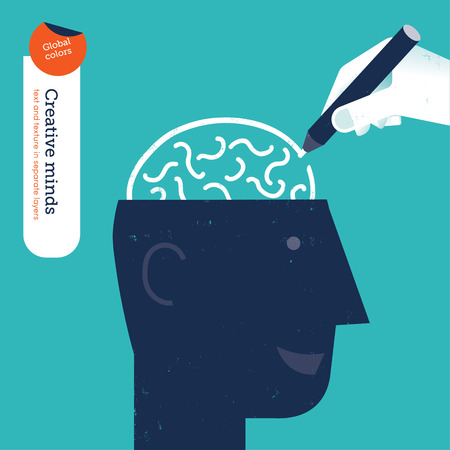Understanding Mindfulness-Based Cognitive Therapy (MBCT)
Mindfulness-Based Cognitive Therapy, or MBCT, is an innovative approach that blends the best parts of mindfulness practices with traditional cognitive therapy. This combination helps people manage stress, anxiety, depression, and even chronic pain by teaching them new ways to relate to their thoughts and feelings.
Origins of MBCT
MBCT was developed in the late 1990s by a team of psychologists, including Zindel Segal, Mark Williams, and John Teasdale. They were looking for a way to help people who struggled with recurring depression. They noticed that mindfulness techniques—rooted in ancient meditation practices—were effective at helping people manage their emotions. By merging these with the proven strategies of cognitive therapy, they created MBCT as a unique tool for mental health.
Core Principles of MBCT
The heart of MBCT lies in its core principles. These ideas guide how the therapy works and why it’s so effective for many people. Here’s a quick look:
| Core Principle | Description |
|---|---|
| Awareness | Learning to notice thoughts, feelings, and bodily sensations without judgment |
| Acceptance | Allowing experiences to be as they are instead of fighting or avoiding them |
| Present Moment Focus | Bringing attention back to what is happening right now, rather than worrying about the past or future |
| Cognitive Restructuring | Recognizing unhelpful thought patterns and gently shifting them toward more helpful perspectives |
| Self-Compassion | Treating yourself with kindness, especially when facing difficulties or setbacks |
How MBCT Integrates Mindfulness and Cognitive Therapy
MBCT brings together two powerful approaches: mindfulness and cognitive therapy. Here’s how they work together:
- Mindfulness Practices: These include guided meditations, breathing exercises, and body scans. The goal is to help you observe your thoughts and emotions without getting caught up in them.
- Cognitive Therapy Techniques: These focus on understanding how your thoughts influence your feelings and behaviors. You’ll learn to spot negative patterns and challenge them in a healthy way.
- The Integration: MBCT teaches you to notice when your mood starts to shift and gives you practical tools to respond mindfully instead of reacting automatically. This can break the cycle of negative thinking that often leads to depression or anxiety.
The MBCT Approach in Everyday Life
MBCT isn’t just something you do in a therapist’s office—it’s meant to be part of everyday life. Whether you’re at work, spending time with family, or simply relaxing at home, these skills help you handle life’s ups and downs with more ease and resilience.
2. The Mental and Physical Health Benefits of MBCT
Understanding How MBCT Supports Well-being
Mindfulness-Based Cognitive Therapy (MBCT) is a powerful approach that blends mindfulness practices with cognitive behavioral techniques. This combination helps people better manage their thoughts, emotions, and physical health. Many Americans are turning to MBCT as an effective tool for improving mental wellness and overall quality of life.
Key Benefits of MBCT
Depression
MBCT is widely recognized for helping prevent relapse in people who have experienced depression. By learning to observe thoughts without judgment, individuals can break the cycle of negative thinking that often leads to depressive episodes.
Anxiety
For those struggling with anxiety, MBCT offers practical skills to notice anxious feelings and respond with greater calmness. It teaches ways to gently redirect attention from worry to the present moment, reducing overwhelming stress.
Chronic Pain
Living with chronic pain can be physically and emotionally draining. MBCT provides strategies for managing pain by shifting focus away from discomfort and cultivating acceptance, which can reduce the suffering associated with long-term pain conditions.
Stress Management
Stress is a common challenge in American life. MBCT equips people with tools to recognize early signs of stress and respond mindfully, preventing burnout and promoting resilience.
Evidence-Based Outcomes
| Condition | Main Benefit of MBCT | Supporting Evidence |
|---|---|---|
| Depression | Lowers risk of relapse, improves mood regulation | Multiple studies show fewer depressive episodes in those practicing MBCT compared to standard care |
| Anxiety | Reduces symptoms, enhances coping skills | Clinical trials report decreased anxiety levels after regular participation in MBCT programs |
| Chronic Pain | Improves pain tolerance, decreases emotional distress | Research indicates better pain management and quality of life for chronic pain sufferers using mindfulness-based techniques |
| Stress Management | Lowers perceived stress, increases resilience | Participants experience reduced stress scores and improved well-being after engaging in MBCT exercises |
The American Perspective on MBCT
In the United States, there’s a growing emphasis on holistic health approaches that address both mind and body. MBCT fits right into this trend by providing accessible skills that can be used anywhere—at home, at work, or even on the go. Whether you’re looking to manage everyday stress or deal with more serious mental health challenges, MBCT offers practical steps toward feeling better and living healthier.

3. Everyday Mindfulness Techniques for Americans
Integrating Mindfulness into Your Daily Routine
Mindfulness-Based Cognitive Therapy (MBCT) isn’t just something you do in a therapy session—it’s about bringing awareness and presence into your everyday life. For Americans juggling busy schedules, family, work, and social obligations, it’s important to find mindfulness techniques that are practical and easy to fit into your daily routine. Below are simple ways to practice mindfulness that align with American culture and lifestyle.
Quick Mindfulness Practices for Busy Days
| Technique | How It Fits American Life | How to Practice |
|---|---|---|
| Coffee Break Breathing | Works during morning routines or coffee breaks at work | Sit with your coffee, close your eyes, take 5 slow breaths, focus on the warmth and aroma |
| Mindful Commuting | Ideal for those who drive or use public transportation | Turn off the radio, notice the sensation of sitting, observe surroundings without judgment |
| Lunch Hour Gratitude Pause | Easily fits into lunch breaks at school or work | Before eating, pause for a minute to acknowledge three things you’re grateful for today |
| Screen-Free Moments | Great for families or solo downtime after work/school | Set aside 10 minutes to put away devices, notice sounds, sensations, and feelings in the room |
| Mindful Walking (Neighborhood Strolls) | Makes use of popular American walking culture in parks or suburbs | Focus on each step, the feel of the ground, and the sights around you instead of using your phone |
Culturally Relevant Mindfulness Tools
- Guided Meditation Apps: Many Americans enjoy tech-based support. Try apps like Headspace or Calm for short guided practices.
- Gratitude Journals: Keeping a journal fits well with American goal-setting habits. Write down one thing you appreciate each day.
- Mindful TV Time: Even while watching TV with family, take a few deep breaths during commercials to reconnect with your body and breath.
- Pocket Reminders: Place sticky notes or reminders on your fridge, computer screen, or bathroom mirror that say “Pause” or “Breathe.” This helps bring mindfulness into daily routines.
- Savoring Mealtimes: Instead of eating on the go, sit down for at least one meal per day and eat slowly, appreciating the flavors and textures.
Troubleshooting Common Challenges
If you find it hard to remember mindfulness practices during a hectic day, try setting alarms on your phone or pairing new habits with existing ones—like practicing gratitude as soon as you get home from work. Remember: mindfulness doesn’t have to be perfect; even small moments of awareness can make a big difference in managing stress and improving well-being.
4. Real-Life Success Stories and Testimonials
How MBCT Has Made a Difference in Everyday Lives
Mindfulness-Based Cognitive Therapy (MBCT) is not just a theory—it’s something that many Americans have used to improve their mental and physical well-being. Here are some real stories from people across the country who have found new hope and balance through MBCT.
Personal Experiences with MBCT
| Name | Location | Main Challenge | MBCT Impact |
|---|---|---|---|
| Susan T. | Seattle, WA | Anxiety & Stress at Work | After joining an MBCT group, Susan learned to pause and use mindful breathing when work pressures mounted. She reports feeling calmer and more focused during busy days. |
| Michael B. | Austin, TX | Chronic Pain Management | Michael credits MBCT techniques for helping him cope with daily pain. By practicing body scans and mindful awareness, he finds relief without relying solely on medication. |
| Linda K. | New York, NY | Depressive Episodes | Through MBCT, Linda discovered how to recognize negative thought patterns early. She now uses mindfulness practices to prevent downward spirals and maintain her emotional health. |
| James R. | Chicago, IL | Trouble Sleeping | James adopted evening mindfulness exercises from his MBCT sessions. Now, he falls asleep faster and wakes up feeling more refreshed. |
Testimonial Highlights
- Susan T.: “I used to get overwhelmed by small setbacks at work. Mindfulness gave me the tools to step back and respond calmly instead of reacting on impulse.”
- Michael B.: “MBCT didn’t cure my pain, but it changed my relationship with it. I’m more present, less frustrated, and better able to enjoy life.”
- Linda K.: “Before MBCT, I felt stuck in negative thinking. Now I catch those thoughts early and use mindfulness to shift my perspective.”
- James R.: “My sleep improved once I started practicing mindful breathing before bed. It helps quiet my mind after a long day.”
The Power of Shared Experience
If you’re considering trying Mindfulness-Based Cognitive Therapy, these real-life stories show that change is possible. People from all walks of life are finding practical ways to use MBCT in their daily routines—at work, at home, or when facing tough times.
5. Tips for Getting Started and Finding Support Locally
Starting your Mindfulness-Based Cognitive Therapy (MBCT) journey can feel a little overwhelming, but there are plenty of resources and support systems available right here in the United States. Here are some simple steps to help you get started and find the support you need.
How to Begin Your MBCT Journey
- Start Small: Try short guided mindfulness exercises at home. Apps like Headspace or Calm offer beginner-friendly sessions.
- Set Realistic Goals: Begin with just a few minutes each day and increase as you feel comfortable.
- Keep a Journal: Record your experiences and any changes in your thoughts or mood. This can help you track your progress.
Finding Qualified Therapists in the US
Working with a trained MBCT therapist is one of the best ways to learn and practice these techniques safely and effectively. Here’s how to find one:
| Resource | Description | How to Access |
|---|---|---|
| Psychology Today | A comprehensive directory of therapists across the US. You can filter by specialty, including MBCT. | Search Online |
| National Alliance on Mental Illness (NAMI) | NAMI provides local chapters and support for mental health, including information about evidence-based therapies. | Find Local Chapters |
| American Psychological Association (APA) | The APA offers a locator for licensed psychologists who may specialize in mindfulness-based therapies. | APA Locator |
Joining Support Groups Near You
- Mental Health America (MHA): MHA has affiliates across the country that host mindfulness and support groups both in-person and virtually.
- Your Local Community Center: Many community centers or libraries offer free or low-cost mindfulness workshops or meditation groups.
- Meetup.com: Search for “mindfulness” or “MBCT” groups in your area to connect with others who share similar goals.
Caution: Checking Credentials Matters!
When looking for an MBCT therapist, always check their credentials. Look for certifications, licenses, or training specifically in Mindfulness-Based Cognitive Therapy. Don’t hesitate to ask about their experience with MBCT during your first conversation.
CREDIBLE ONLINE RESOURCES FOR SELF-LEARNING
- Mindful.org: Offers articles, guided meditations, and tips tailored for Americans interested in mindfulness practices.
- UMass Memorial Center for Mindfulness: The birthplace of modern mindfulness programs, offering online courses and resources.
- Headspace App: User-friendly app with guided meditations and educational content suitable for beginners.
- Calm App: Another popular app with mindfulness exercises, sleep stories, and stress reduction tools.
If you’re ready to begin, remember that finding the right fit—whether it’s a therapist, group, or online tool—can take time. Be patient with yourself as you explore what works best for you on your MBCT journey.


